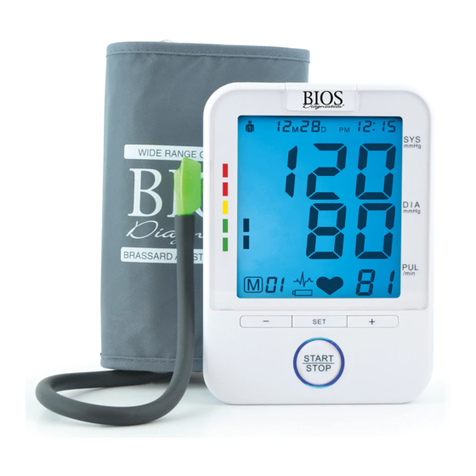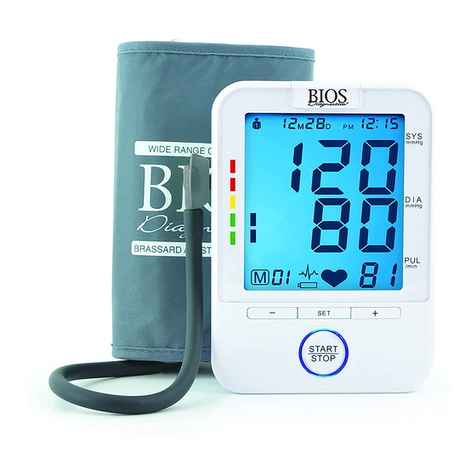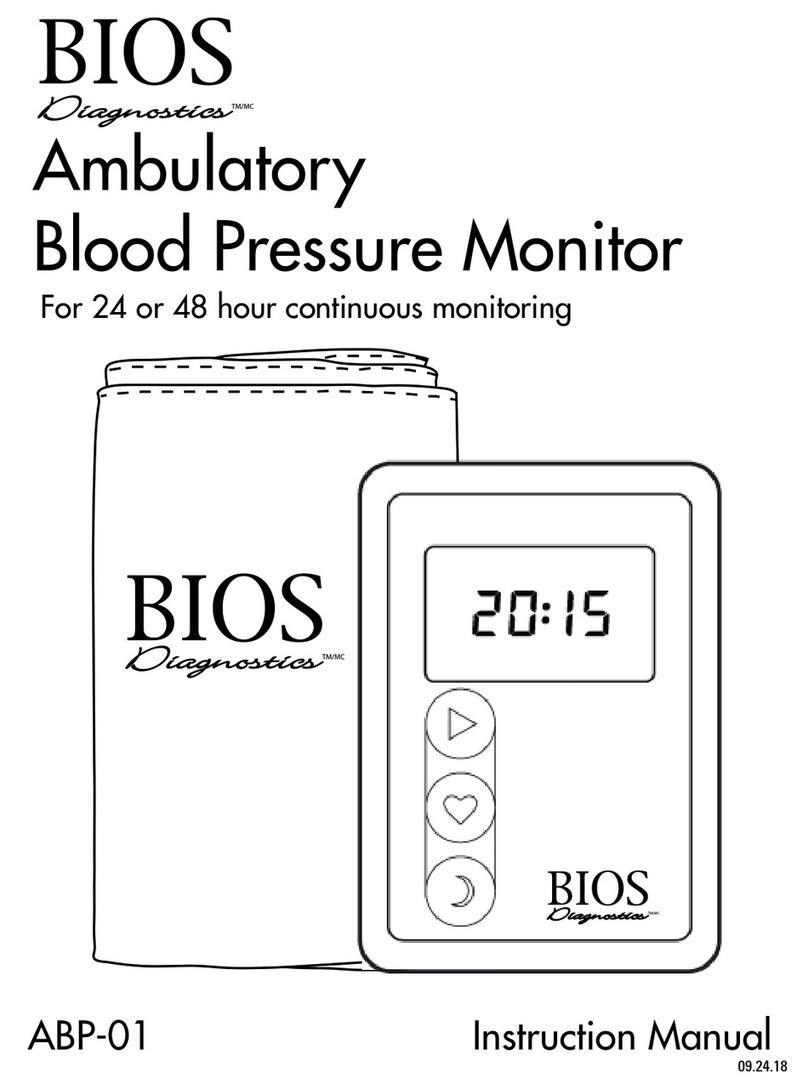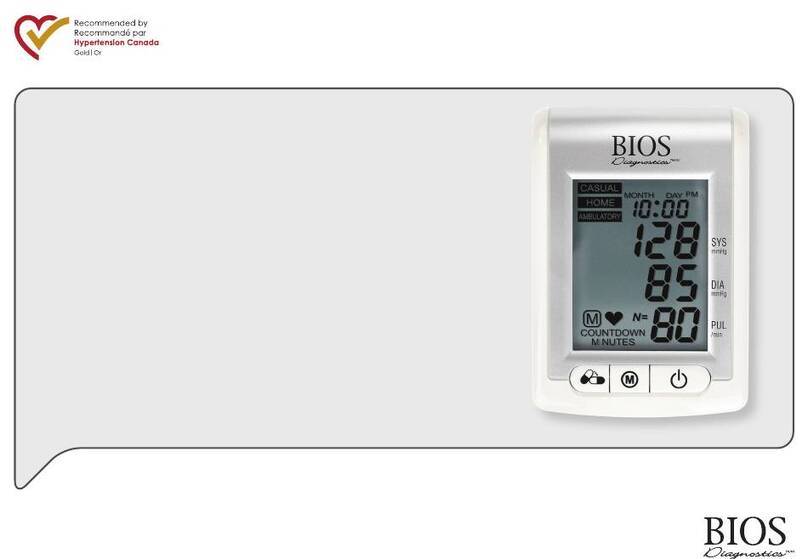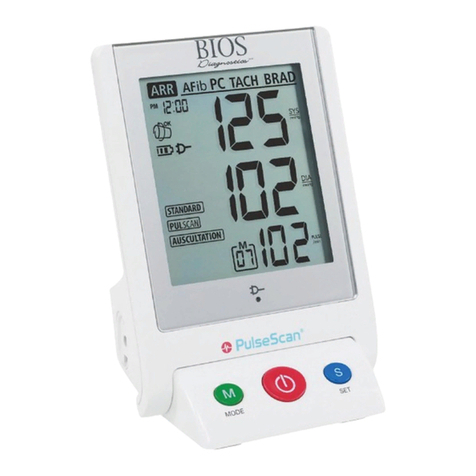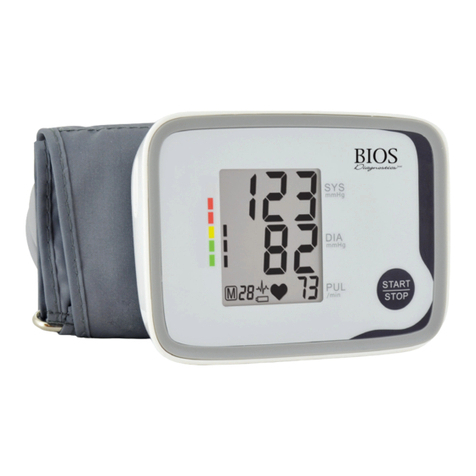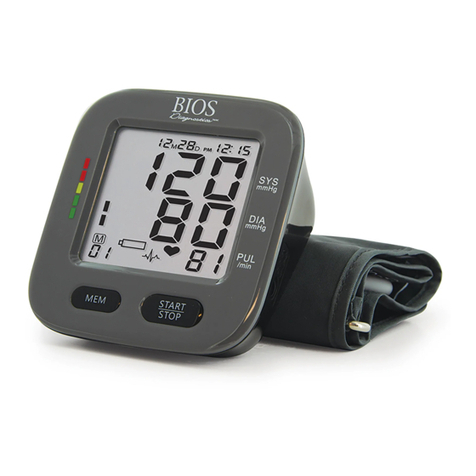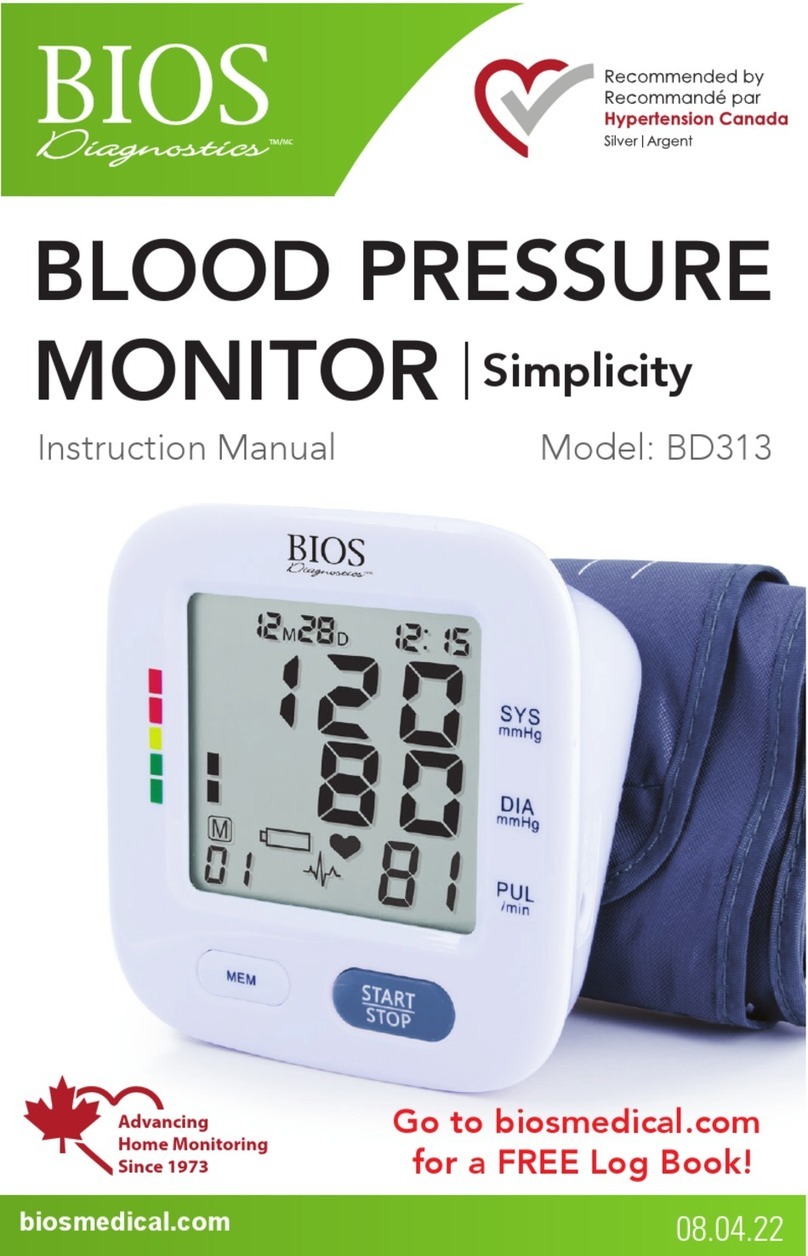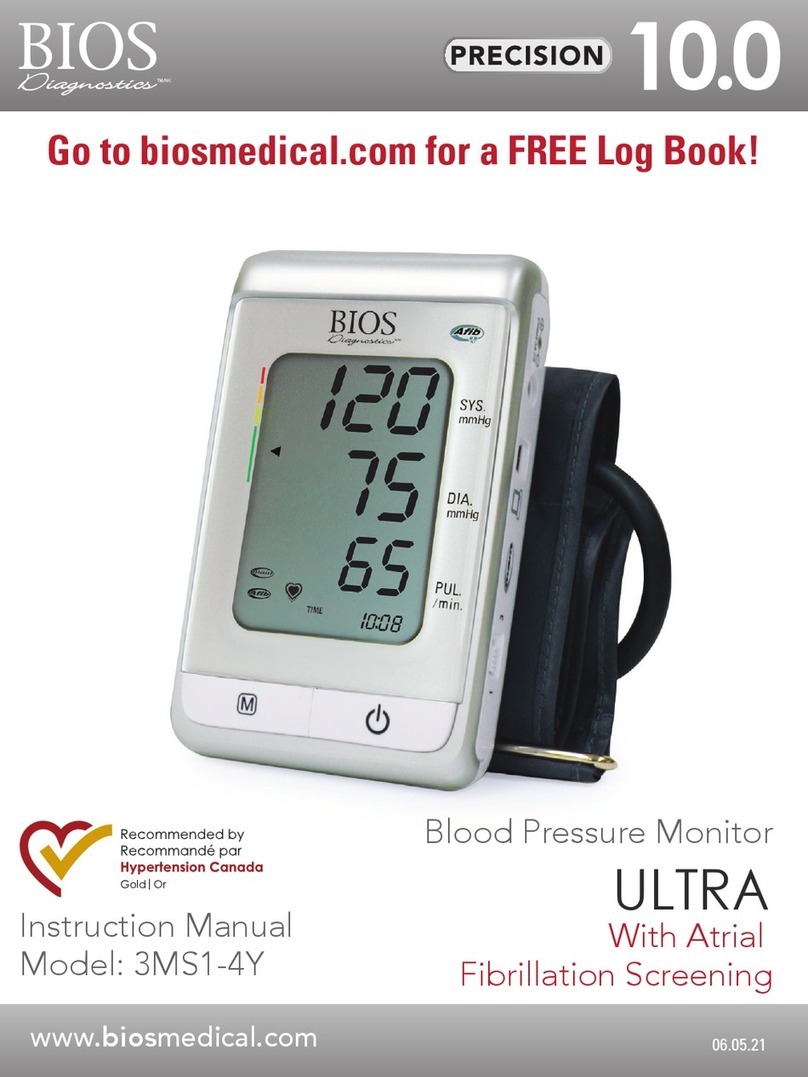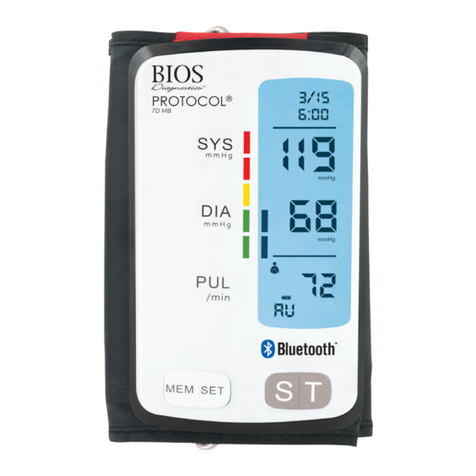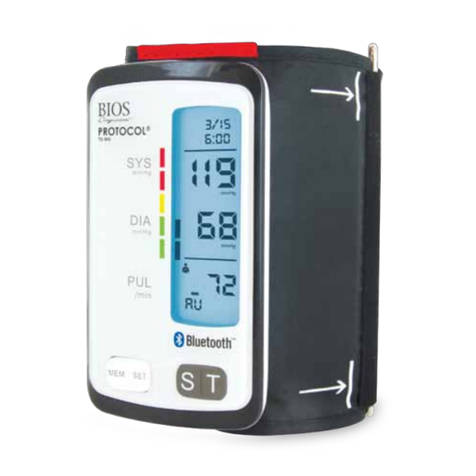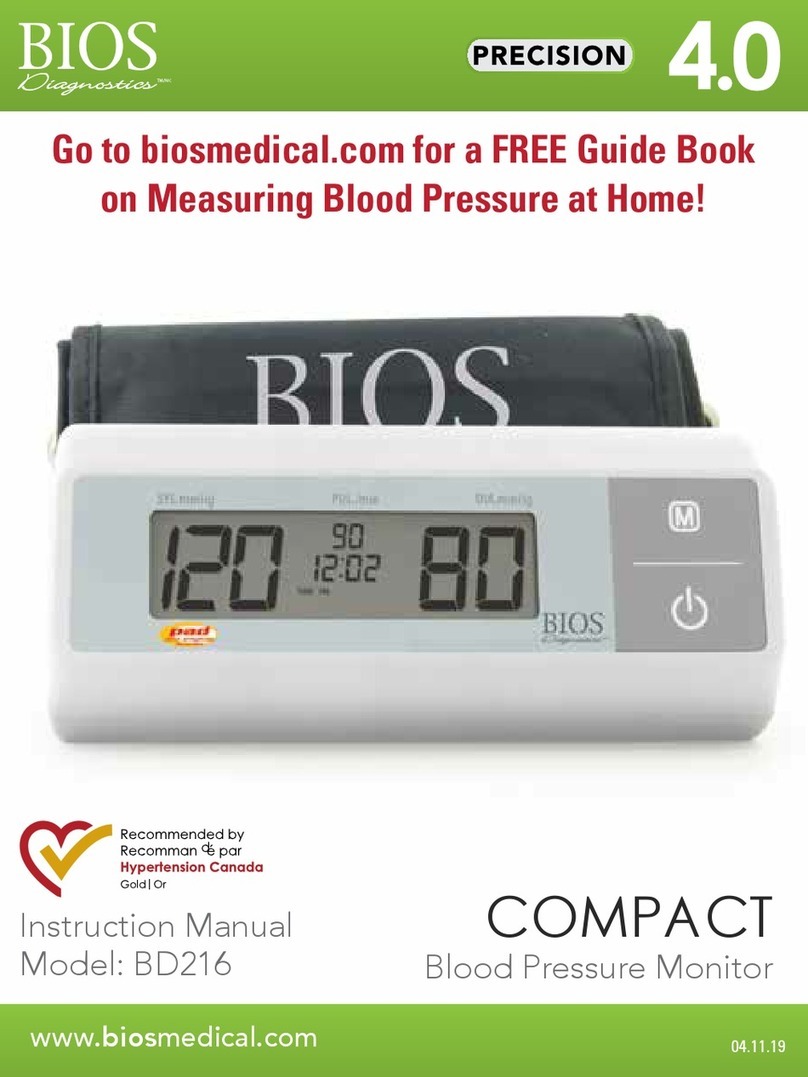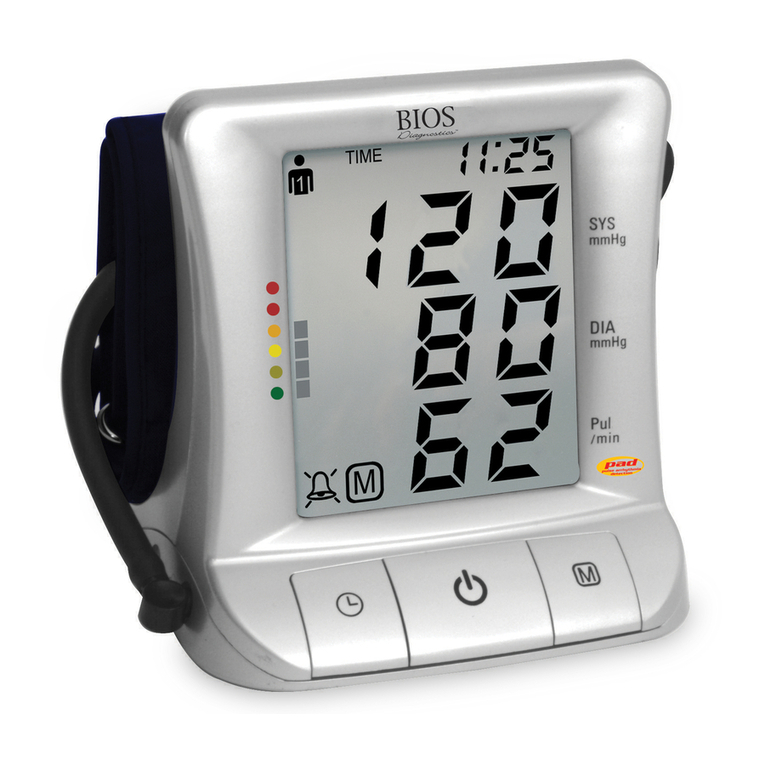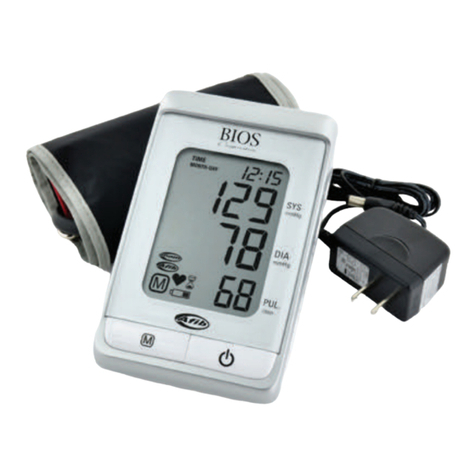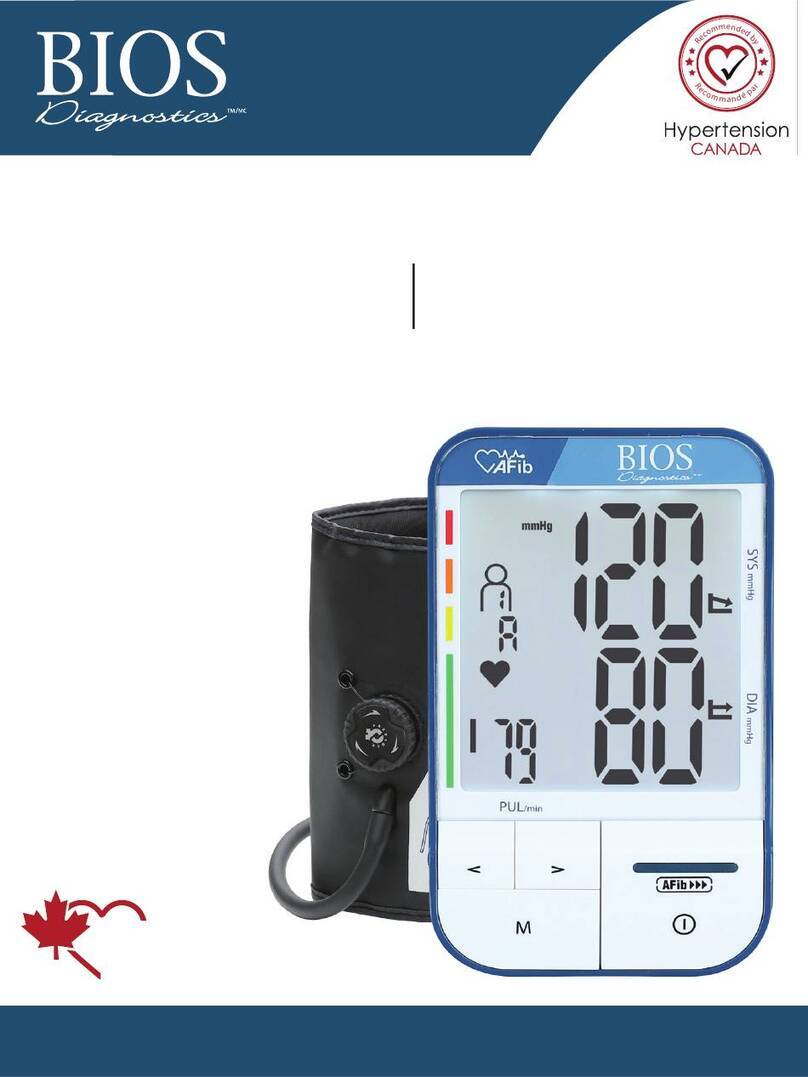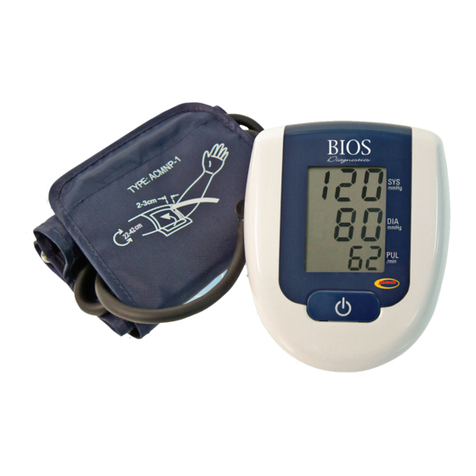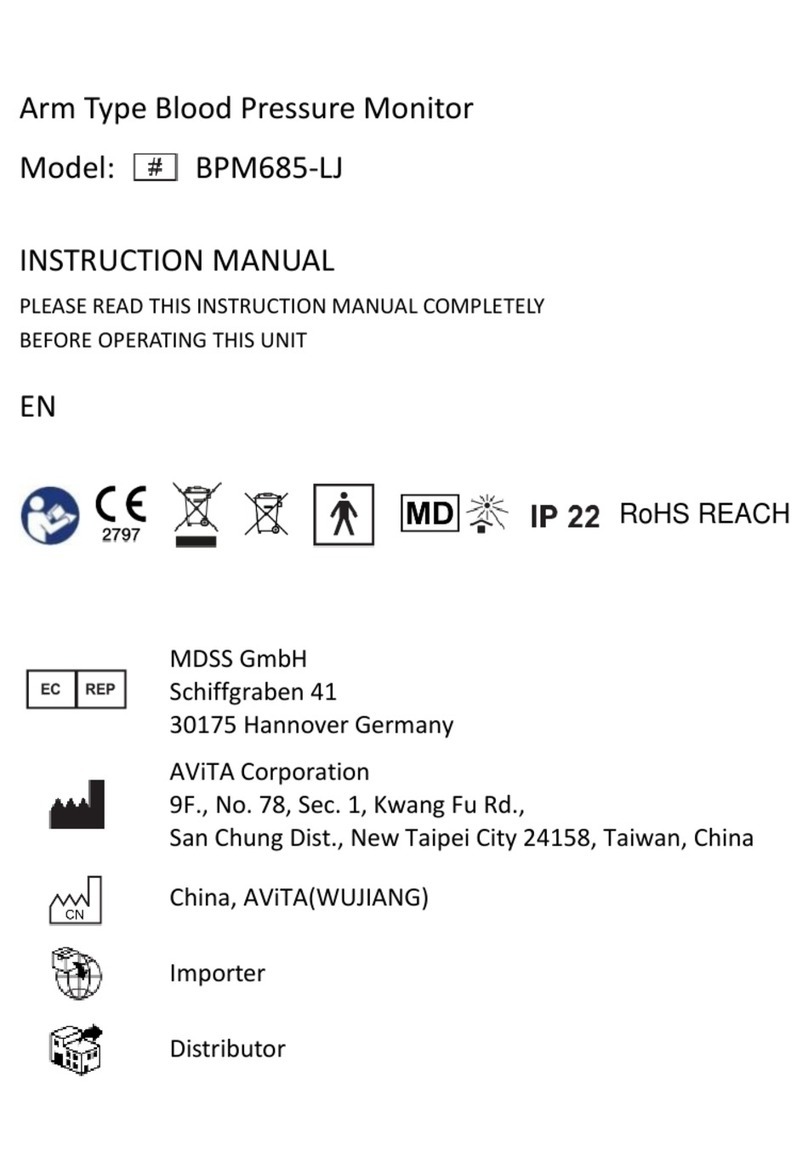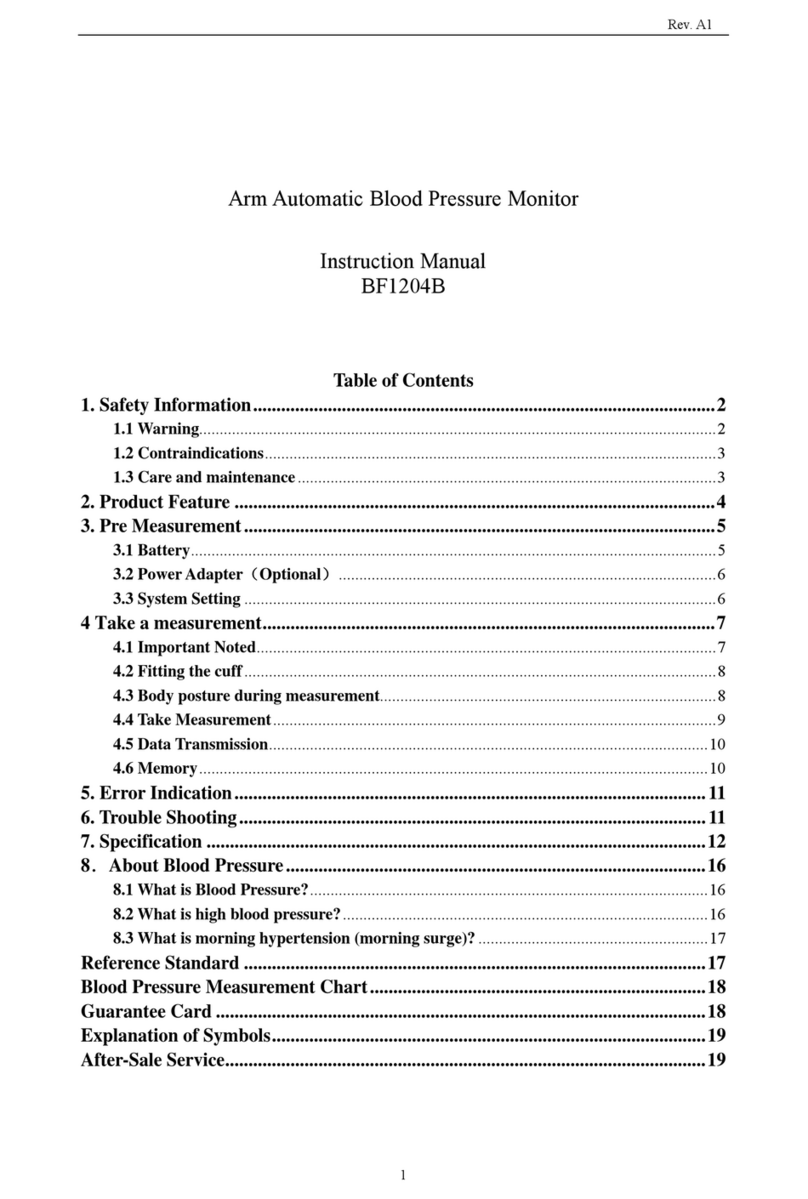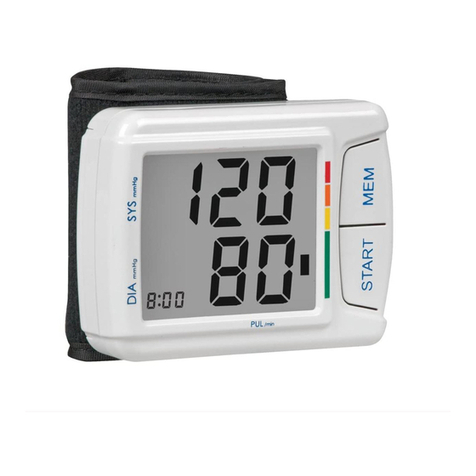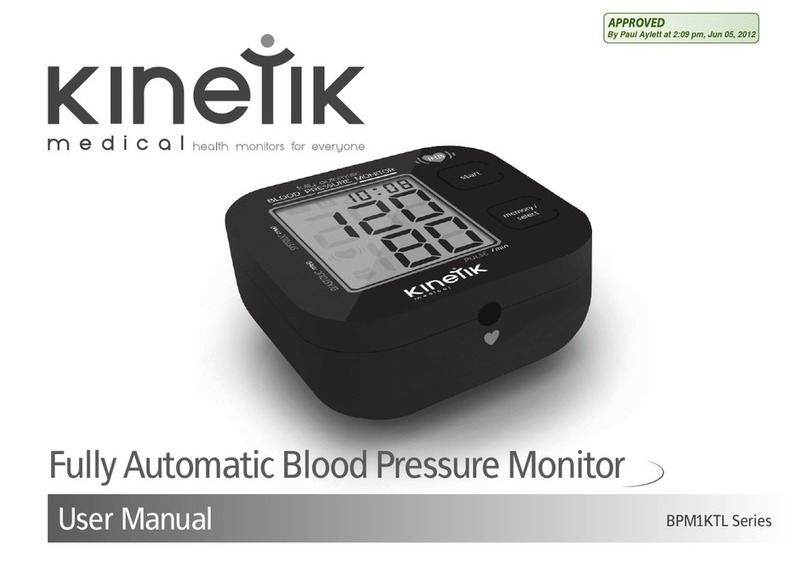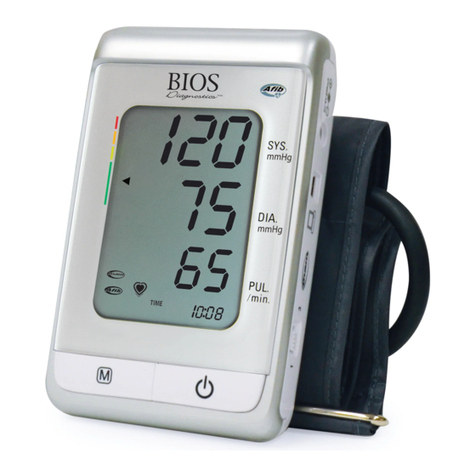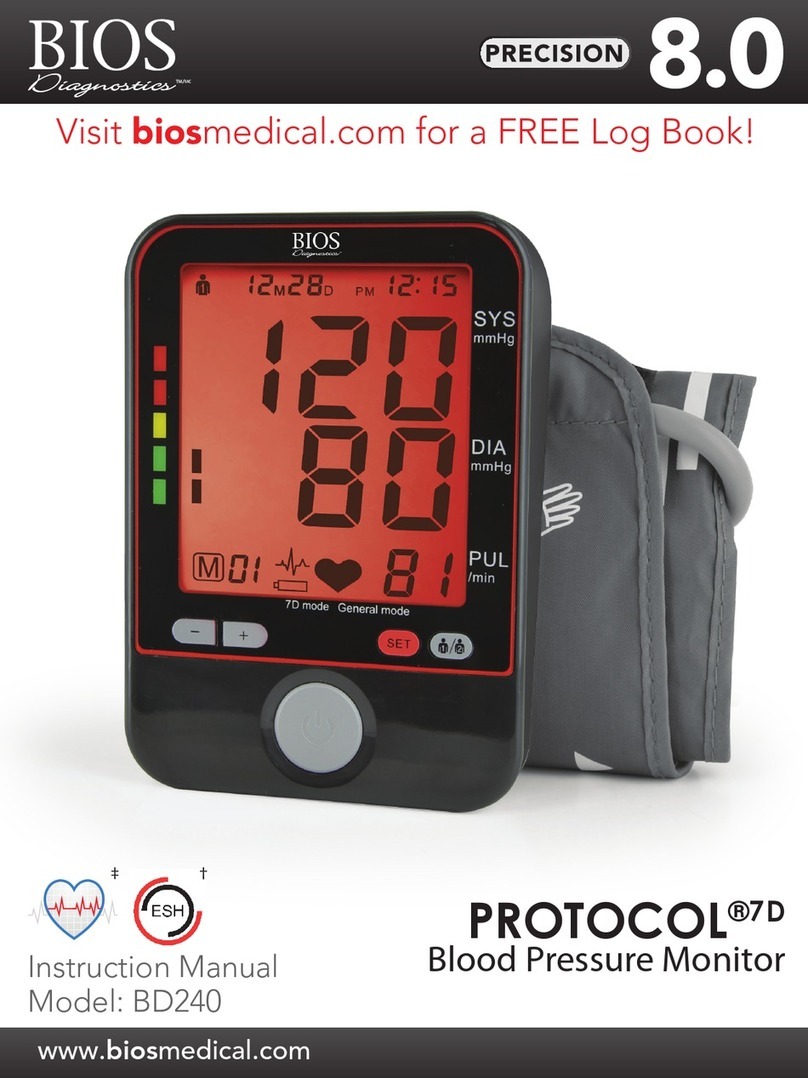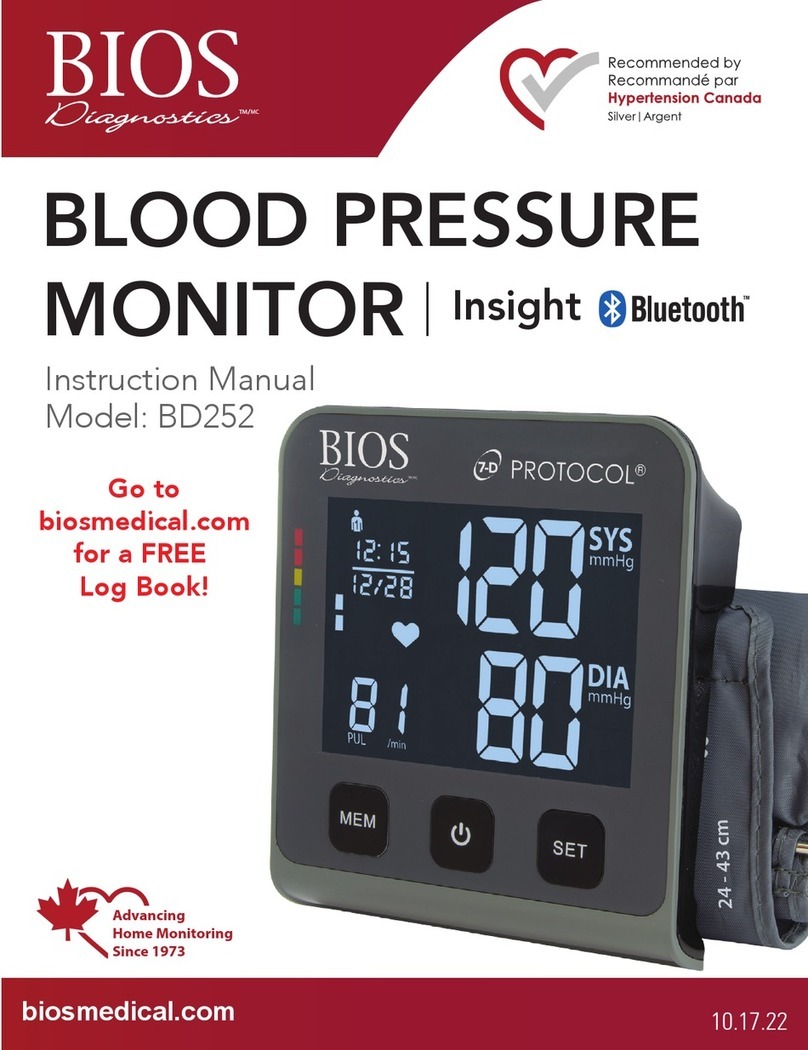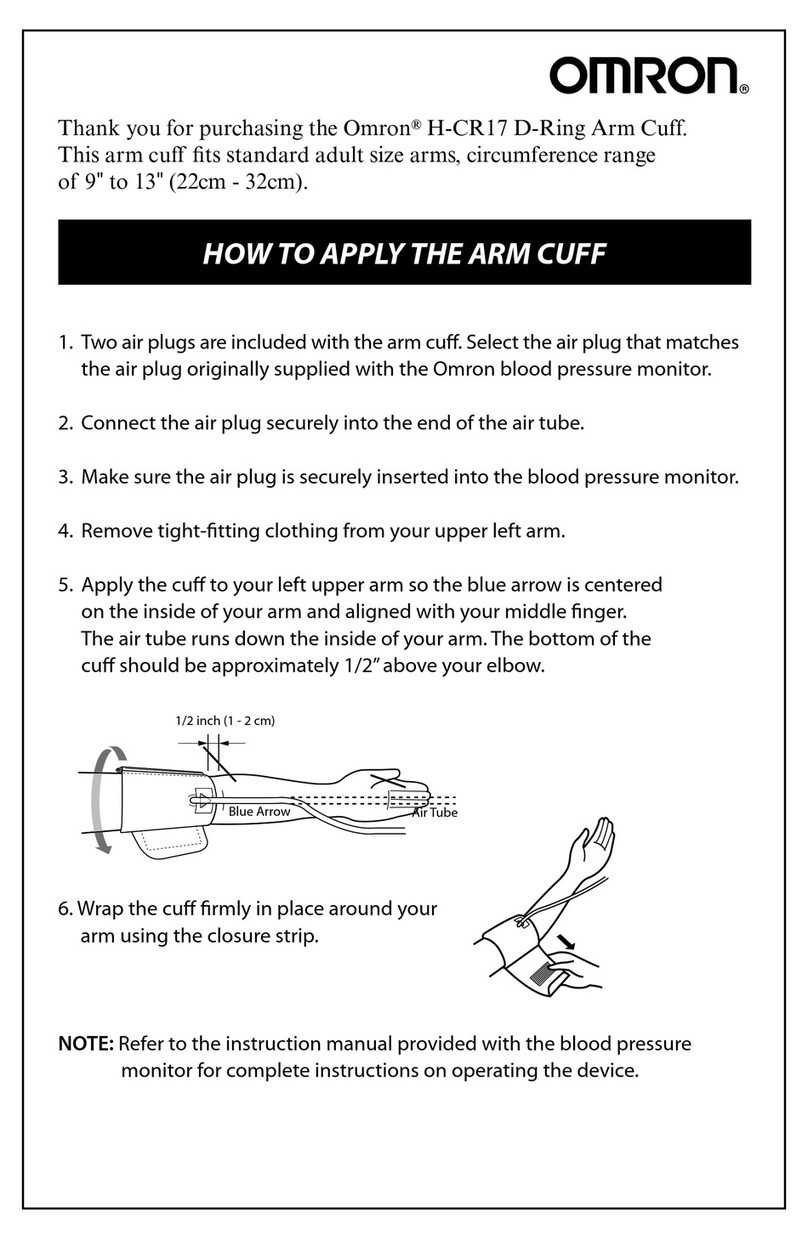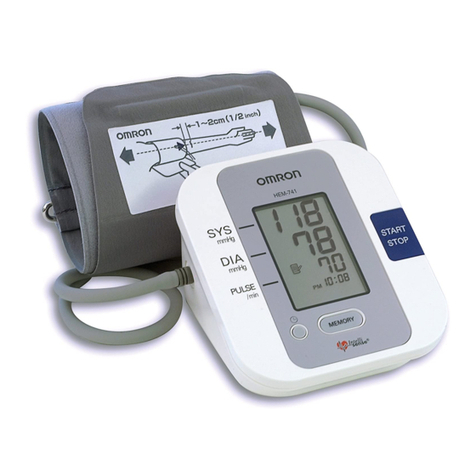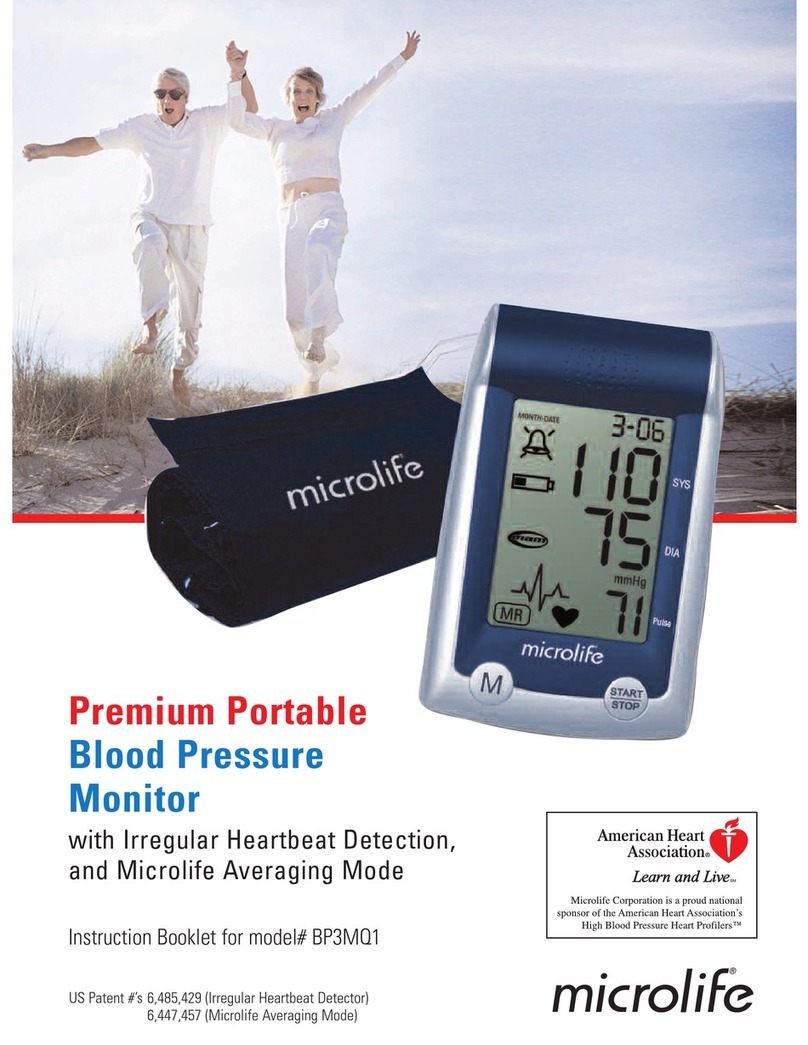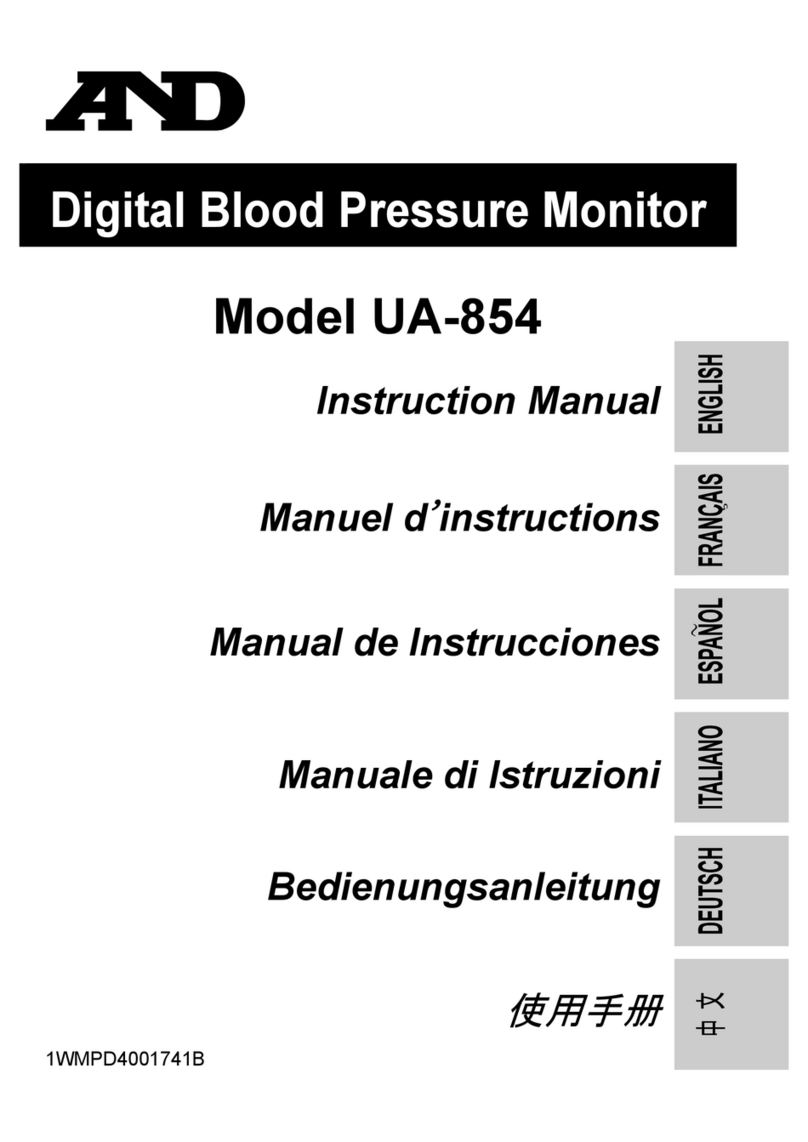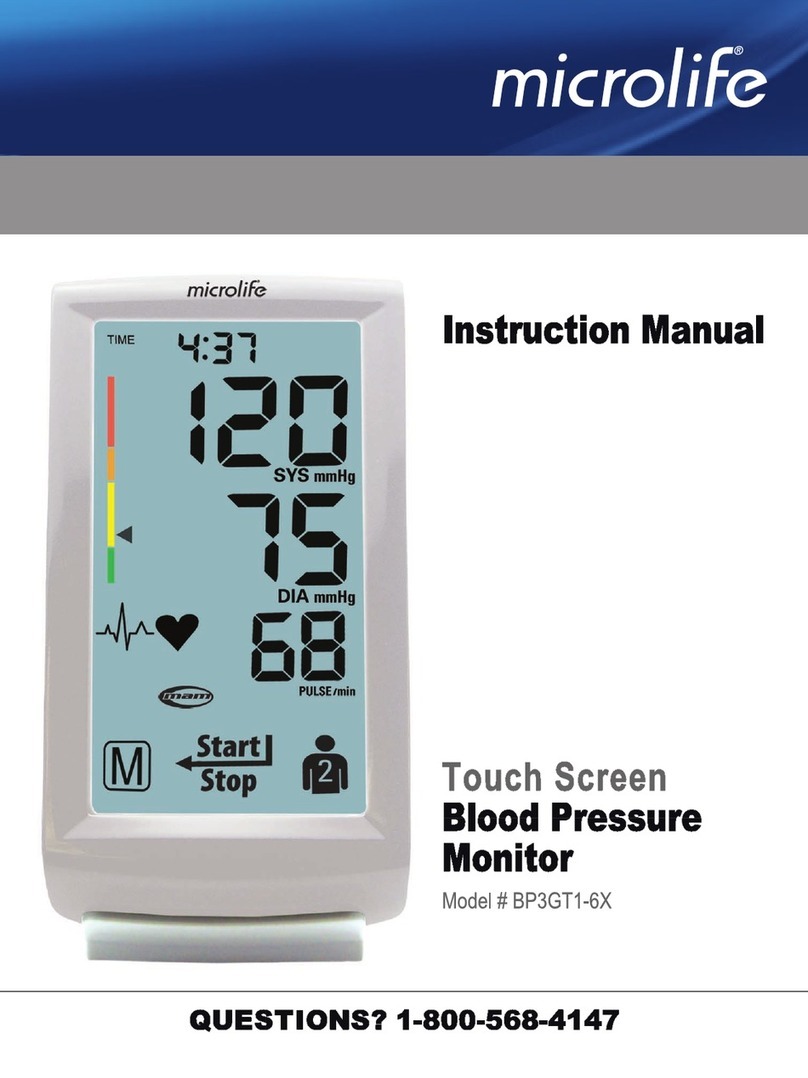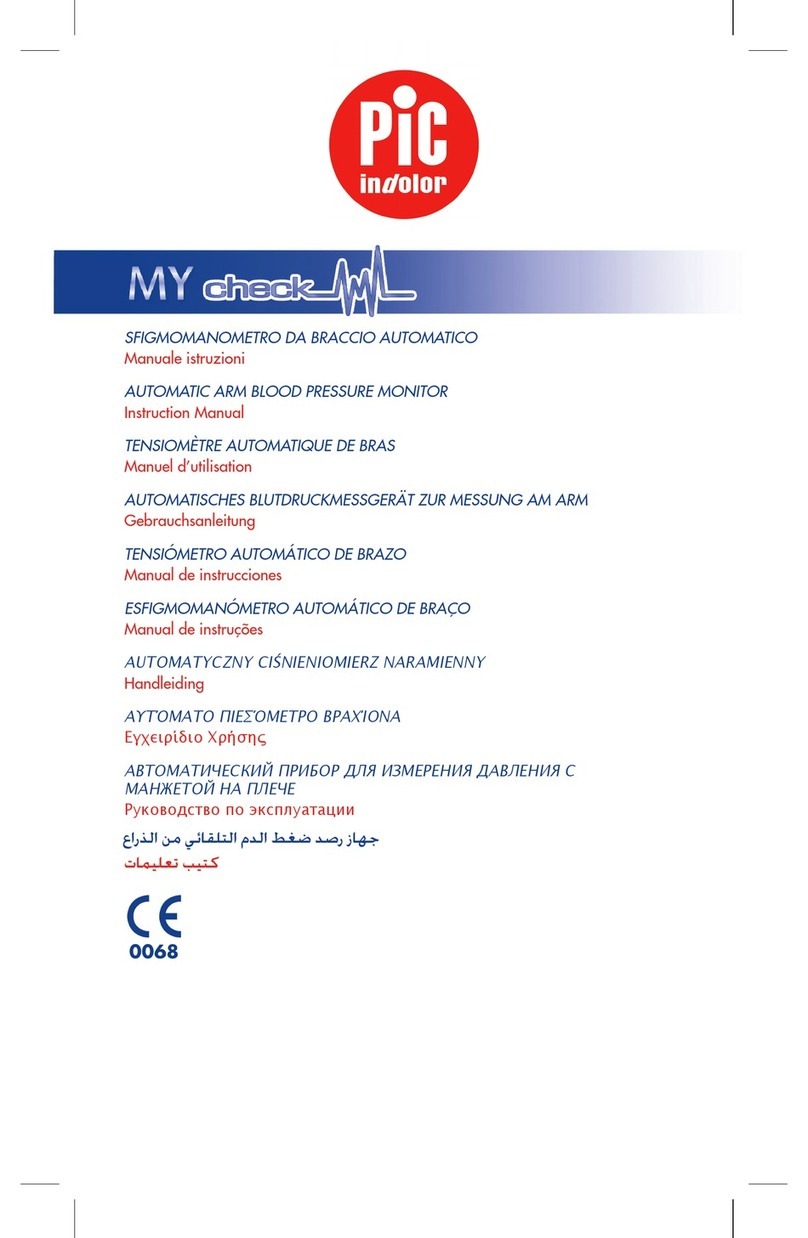
• Ensure that children do not use this device unsupervised; some parts are small enough to be swallowed.
• Using the unit in the immediate vicinity of mobile phones, microwave appliances or other devices with strong
electromagnetic fields may result in impaired functioning.
• Do not use this device close to strong electromagnetic fields, such as mobile telephones or radio installations.
Keep a distance from such devices when using this unit.
1.2C Comparing Readings to Other Blood Pressure Devices
Many questions arise when two blood pressure devices are compared in an effort to check accuracy. An accurate
comparison requires repeatable measurements under the same conditions, and significant time is required to reduce
naturally occurring blood pressure variability during the test. For proper comparisons, the subject should be seated
comfortably with feet flat on the floor, and have rested for 5 minutes before the first reading to allow blood pressure
levels to stabilize. The patients back, elbow and forearm should be supported, and the middle of the cuff should be at the
level of the right atrium. There should be no talking or moving during the measurement and if comparing to an aneroid
gauge or mercury column, observers should avoid parallax and be careful not to round measurements.
The most accurate way to compare devices is to take two readings at the same time. However most people and doctor’s
offices do not have the equipment necessary to measure blood pressure from two devices simultaneously. To take
sequential measurements properly requires a pair of initial measurements to determine the subjects blood pressure level:
first with the reference equipment, followed by 60 seconds, then with the monitor-under-test. The actual accuracy test
requires three pairs of measurements with 60 seconds between measurements. These measurements are averaged
and a comparison can be made. Since most people tend to relax and their blood pressure falls with subsequent
measurements, following this protocol reduces these natural changes in blood pressure levels. The standard technical
error of both consumer and professional devices is normally ±3 mmHg, so a discrepancy of 6 mmHg is acceptable even
when the devices are working within their specifications.
Any comparisons without following the procedures described above will not yield reliable results. In addition, to do an
accuracy test properly the reference device must also be tested to a known reference to confirm its accuracy, prior to
being used as the reference for comparisons.
1.2D Calibration
Digital blood pressure monitors do not require recalibration. If the unit turns on and does not display an error code, the
product is working properly. In extremely rare cases, the cuff may have developed a pin-hole leak, or the gasket where
the cuff connector enters the monitor may not have a proper seal; both of these leaking air issues will potentially cause
errors in accuracy, but otherwise the product will work accurately without drifting out of calibration.
1.3 What do your Numbers Mean?
Blood pressure is the pressure in your blood vessels while blood circulates throughout your body. High blood pressure or
“Hypertension” is the pressure at which ones normal average blood pressure is considered too high and other health risks
including: heart attack, stroke, dementia, kidney failure, heart disease and erectile dysfunction may occur. It is expressed
as two numbers: systolic/diastolic 120 mmHg/ 80 mmHg (mmHg= millimeters of mercury). “Systolic” numbers refer to
the pressure on the walls of your arteries while the heart is contracting and pushing blood. “Diastolic” pressure is
the lower number when the heart is at rest and relaxed. A simple way to understand this is to picture a garden hose.
When the tap is turned on, the immediate pressure on the walls of the hose is the “systolic” value, and when the tap
is turned off it is the “diastolic” number.




















